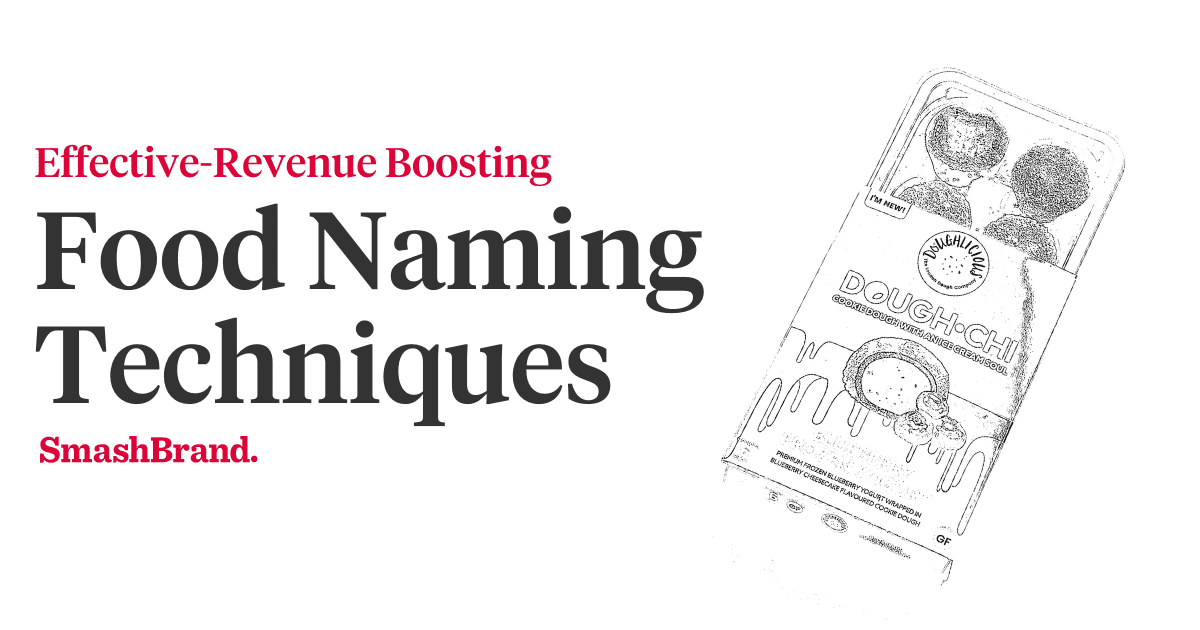Are you aware of the fact that many branding projects fail to yield positive results? This occurs when companies focus on one aspect of the overall strategy, such as imaging, logo rebranding, typography, or color palette, forgetting how it impacts the other brand assets. In reality, multiple factors come into play during branding, including brand positioning, messaging, architecture, and archetypes for success.
A well-planned rebranding strategy developed by those with experience is how you solve this problem, where a collaborative effort occurs to identify the disconnect between brand and consumer while improving the brand positioning. But rebranding doesn’t have to be a complete brand overhaul; it can focus on one aspect of the company that needs improvement. In this article, we will discuss different types of rebranding in detail and discuss their pros and cons and key considerations during the process.
Whether you’re a startup struggling to develop a strong brand identity or a company seeking to stay relevant in an ever-changing market, rebranding can be a powerful tool to achieve your goals. By understanding the different types of rebranding and their implications, you can make informed decisions, helping you build a brand that resonates with your target audience and drives business growth.
What is Rebranding?
Rebranding is a marketing strategy that involves changing a company’s brand identity to better align with its brand strategy. It can include developing a new name, logo, tagline, and other visual assets to create a fresh and updated image and perception for the company.
Often, rebranding is updating outdated brand to make it modern, distinguish it from competitors, or reflect a change in business focus. rebranding helps companies enhance their brand positioning and stay current in the constantly changing market. t is a powerful tool for companies to remain competitive and relevant in today’s business world.
Why Companies Rebrand
There are various reasons why companies rebrand. For instance, a company may want to appeal to a new target audience. Similarly, it may want to stand out from its competitors or modernize its outdated brand. Sometimes, companies consider rebranding due to a shift or change in the business focus. It allows the communication of brand positioning and values and improves brand equity even after a shift in the business focus.
Considering a company’s current situation, it may undergo one of the three main categories of rebranding: a complete overhaul, a merger, or a brand architecture update. Regardless of the type, a successful rebrand requires careful consideration and planning to ensure the new brand accurately reflects the company’s mission and resonates with the target audience’s preferences.
The Importance of Rebranding
Rebranding is essential for businesses to maintain brand awareness and relevance in an ever-changing market. The initiative helps companies reflect their growth or new direction and stay current with evolving trends and consumer preferences.
By updating their brand identity, companies can attract new customers and retain existing ones while improving brand awareness and recognition. A well-executed rebranding strategy can lead to increased revenue, as it can improve brand perception and customer loyalty.
While rebranding can be a helpful strategy, without thorough research and planning, it may not bring the desired results; therefore, it can have negative consequences if not executed properly.
Businesses must conduct market research, perform a brand diagnosis, and strategically plan the development to ensure that the new brand accurately reflects the company’s values and resonates with the target audience.
In today’s fast-paced and competitive market, rebranding is crucial for businesses to stay relevant and competitive. By investing in a successful rebranding strategy, businesses can improve their brand awareness, attract new customers, and drive revenue growth.
Types Of Rebrands
Before creating your rebranding checklist, it’s essential to understand successful rebranding strategies. Let’s review the rebranding benefits of each project and discuss their significance.
Complete Rebrand
During a complete rebranding, a company undergoes a total overhaul of its brand identity, name, new logo, and voice. Such rebranding efforts are necessary when a company undergoes significant changes, such as mergers and acquisitions, shifts in business direction, or when trying to overcome a negative reputation.
For example, a company that historically centered its efforts on a particular product or service may need a rebranding process to better align with a fresh market or target audience. This strategic brand repositioning will enable the company to effectively communicate its new brand identity to its existing and potential new clientele.
Similarly, if a company faces negative brand sentiment, it may need to consider a complete rebrand to overcome this issue. An excellent example of this is Facebook, which rebranded itself into Meta. This rebrand aimed to overcome its negative reputation after the company was attacked and heavily scrutinized for its practices concerning privacy.
There are several key considerations to consider when deciding to perform a complete rebrand. First, reimagining the company identity is crucial, setting the tone for rebranding. Additionally, stakeholder communication is essential, ensuring everyone knows the changes and their reasoning. Finally, the rebranding process must be carefully planned and executed, with a clear timeline and budget.
Read More: Breaking Down The Cost of Rebranding
Partial Rebrand
A partial rebrand involves updating a company’s brand identity while retaining recognizable features. When a company wants to refresh outdated elements of its brand image or expand into new markets or audiences, it often goes for a partial rebrand. For instance, a company may want to consider logo rebranding to give it a modern look but it must understand how this new logo impacts other design assets.
This type of rebrand allows the company to maintain its brand equity while staying current and relevant in the market. Another motive behind a partial rebrand could be the company’s aspiration to venture into fresh markets or engage with new audiences.
For example, a company traditionally concentrating on an older demographic may seek to revamp its brand identity to resonate with a younger consumer set. This strategic shift not only aids in attracting new clientele but also upholds the company’s pre-existing brand image and reputation.
Like a complete rebrand, a partial rebranding campaign requires careful consideration of critical factors that make or break the campaigns success. Achieving a balance between retaining old elements and introducing new ones is crucial to ensure that the refreshed brand identity remains familiar to existing customers. Moreover, maintaining clarity and coherence across all brand elements is vital in establishing a consistent and unified brand image.
Chobani yogurt can be considered one of the best examples of partial rebranding. The company was struggling due to immense competition in the yogurt market. The company noticed that almost everyone was using the same packaging, and instead of going with the flow, it changed its typography, colors, and imagery. This strategy helped the company to stand out entirely from the crowd.
Brand Refresh
A brand refresh helps companies to update only certain parts of their brand identity and make it relevant to the market needs. It is helpful for businesses that want to update their brand image while maintaining brand recognition and equity.
A brand refresh is more fitting for companies in certain instances than a complete overhaul. As consumer preferences and trends evolve, it becomes imperative for companies to embrace these shifts and modify their identity accordingly. In such scenarios, a brand refresh is the solution.
Companies often refresh their brands to evolve without drastically changing. For example, a company may update its logo or brand messaging to reflect its current values and mission while maintaining its core brand strategy. It allows them to maintain brand equity while resonating with changing consumer needs and preferences.
When considering a brand refresh, it’s important to make subtle changes that keep your brand recognizable to existing customers while maintaining brand recognition and equity. Being diligent about retaining memorability preserves your company’s existing reputation and positioning.
Conwed, a leading industrial netting manufacturer, unveiled a successful brand refresh in October 2023, coinciding with its integration into the Mativ brand family. This revitalization pays homage to Conwed’s legacy while presenting a modern and innovative identity.
The refreshed website and brand provides richer insights into Conwed’s diverse market segments, products, and custom capabilities. Furthermore, the responsive and clean website design, improved functionality, and a focus on customer case studies enhance the user experience.
The positive impact of this brand refresh is evident in Conwed’s ability to reaffirm its role as an essential partner to leading manufacturers across various markets while providing customers with a more engaging and informative online platform.
Additional Types Of Rebranding
In addition to the above types of rebranding, companies use several strategies to enhance their brand positioning, marketing performance and expand their businesses. Let’s look at some additional types of rebranding efforts that come in handy occasionally.
Niche Rebrand
A strategy process that allows a company to refine a specific aspect of its brand identity without undertaking a complete overhaul. Niche rebranding ensures the company’s identity resonates more effectively with its desired market segment.
Niche rebranding can entail adjusting elements such as the company’s messaging, visual design, or other brand attributes to make them more appealing or relevant to a particular audience. The company can strengthen its brand positioning with a new brand identity and appeal to new customers without losing old customers.
Cultural Rebrand
In cultural rebranding, a company may adjust various brand elements, including messaging, visual design, and communication strategies, to ensure they resonate with the cultural values and expectations of the target market. The company aims to establish a more substantial presence in that market and create a deeper connection with its audience with the help of a cultural rebrand.
Repositioning Rebrand
The core objective of a repositioning rebrand is to redefine how customers perceive the brand concerning its primary competitors. It typically entails a shift in the brand’s positioning, messaging, and strategic orientation. The brand strives to flexibly adapt to shifting market dynamics, emerging trends, and evolving consumer preferences.
Brand extension
Brand extension, a savvy rebranding strategy, enables a company to broaden its horizons by venturing into new product categories or markets while harnessing the power of its well-established brand name. This approach capitalizes on the brand’s equity and recognition to carve out a presence in fresh domains.
Brand consolidation
Brand consolidation, a strategic approach, involves amalgamating multiple brands under a single overarching identity or umbrella. This process aims to streamline and simplify a company’s brand portfolio, creating a more cohesive and efficient brand strategy. During a brand consolidation, the following key points are considered:
- Efficiency and cost savings
- Clarity and focus
- Enhanced brand power
- Market expansion
Co-branding
Co-branding is another successful marketing strategy where two or more brands collaborate on a project, campaign, product, or service to leverage each other’s strengths and sometimes develop a new brand. It often involves partnerships or collaborations between two brands. The following are some of the successful examples of co-branding:
- Toyota partnered with Tesla to incorporate electric vehicle technology into some of their vehicles. This collaboration enabled Toyota to expand its electric vehicle offerings.
- Nike and Apple teamed up to create the Nike+ product line. This co-branding partnership integrates Nike’s athletic apparel with Apple’s technology, enabling users to track their fitness and performance.
- Starbucks and Spotify collaborated to create music playlists for Starbucks stores. This partnership enhances the in-store experience for customers and promotes Spotify’s music platform.
- LEGO’s partnership with the Star Wars franchise has resulted in numerous rebranding products. These include Star Wars-themed LEGO sets that appeal to fans of both brands.
- The collaboration between Adidas and Kanye West produced the famous Yeezy line of sneakers, which have become a sought-after fashion item.
Rebranding Challenges
When undergoing a rebranding campaign, there are various risks of rebranding that lead to disastrous situations. Let’s discuss them individually and learn what to do in each condition:
Resistance to Change: Rebranding often involves a significant shift in a company’s identity, which may face resistance from employees, stakeholders, and loyal customers. People naturally prefer the familiar, and changes can be met with skepticism.
Potential Confusion Among Customers: A rebrand can confuse existing customers who may no longer recognize the company’s identity. Managing this transition is crucial, ensuring customers are informed about the changes and the new brand identity is effectively communicated.
Costs and Resources: Rebranding can be a substantial investment, involving costs related to creating a new brand strategy, designing new visual assets, updating marketing materials, and more. It’s essential to allocate the necessary resources and budget to successfully rebrand effectively.
Companies can address these challenges through careful planning, communication, and a clear understanding of the brand guidelines.
Read More: How To Create A Rebranding Rollout Plan.
Navigating the Right Choice
Making the correct choice during the rebranding process is crucial. It involves understanding the underlying purpose behind the rebrand and why it’s necessary, whether it’s to gain market share or enter a new market. The rebranding agency must look for specific rebranding questions and develop a thorough rebranding checklist before laying out the strategy.
It requires making the best decision that’s tailored to the unique situation and goals of the business. Whether the objective is to expand market share or venture into new markets, aligning the rebranding strategy with these goals is essential to achieving a successful rebrand transformation.
Data-Driven Brand Development That Can Guarantee Sales Performance.
If you need a rebrand with performance predictability, we can help. SmashBrand is a brand development agency that researches, designs, and tests all products to ensure peak shelf performance. Book a time to discuss your project with our team.






